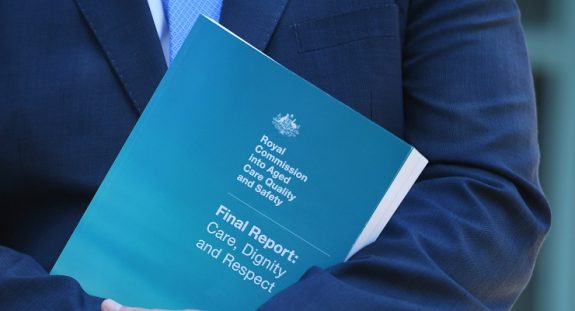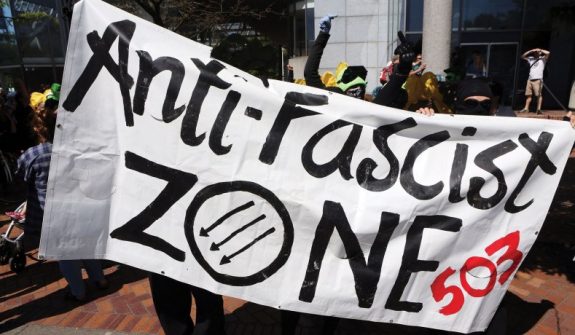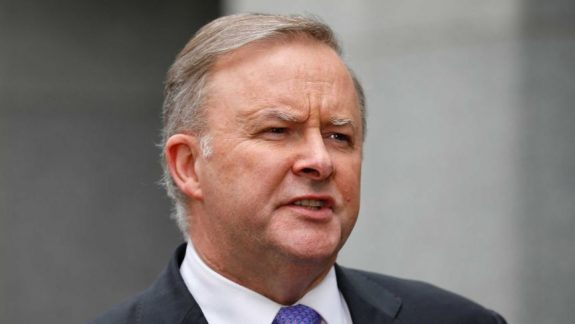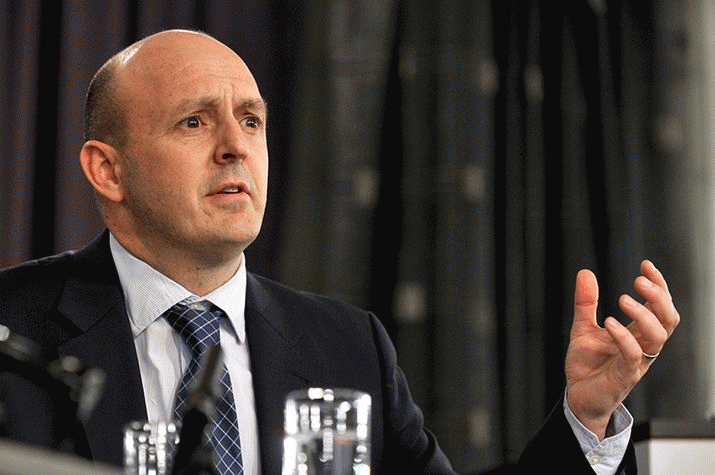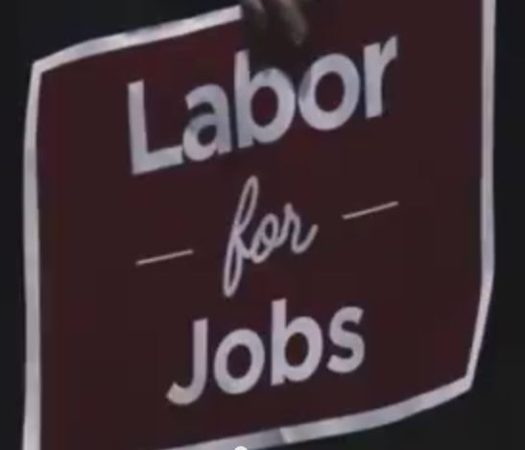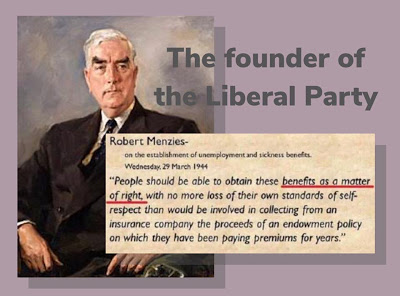Responding to ‘Cynical Theories’ – A Critique of Postmodern Theory

“Cynical Theories” – by Helen Pluckrose and James Lindsay – is a thorough critique of postmodernism as exemplified by Foucault, Derrida and Lyotard from the 1960s onward; as well as the Applied and ‘Reified’ (in the authors’ words) postmodernist intellectual movements which have followed. This is a response that book.
The period of ‘high postmodernity’ saw thinkers like Foucault, Derrida and Lyotard adopt an approach of irony and ‘playfulness’ in response to capitalist domination, the decline of communism as a perceived alternative, and the hopelessness which followed. The ‘applied’ phase sought to apply postmodernism to concrete issues, and in this sense saw a re-emergence of some kind of hope on the Left after the decline of communism. Meanwhile what the authors call the ‘reified phase’ saw postmodern Theory increasingly seen as representing ‘The Truth’ about society, which cannot be questioned. The original postmodernists were sometimes criticised for taking deconstruction too far, or because they could “afford” to be ‘playful” and “ironic” (being white, middle class and male) (p 48). The objective reality of certain oppressed groups was to be accepted; and not subjected to deconstruction. ‘Reconstruction’ was seen as being as important as deconstruction. (not entirely a bad thing!) What has come to be described as “Standpoint Theory’ has seen an abandonment of ‘scientific truth’ and its replacement with group experience. What some people call ‘Identity Politics’. ‘Standpoint theory’ has it that people are defined by their social location in a landscape of privilege and oppression.
Indeed science, empirical knowledge and notions of ‘progress’ are sometimes seen as part of the “Western Enlightenment’ tradition; and that is dismissed as an Ideology of Western domination. As well as being oppressive of ‘other ways of knowing’ (for example, mystical spiritual traditions, paganism, witchcraft). In reality these traditions should also be open to criticism; but the Enlightenment saw a general scepticism about ‘the spiritual’; and an unwillingness to engage (though arguably if the Enlightenment should be subjected to criticism, so too should ‘other ways of knowing’). Science especially is seen as holding great “prestige”; and that can be a cover for domination (as in the past, where racist colonialist discourses were legitimised (falsely) in its name). Certain racial, sexual, gender and other groups are seen as oppressed by dominant discourses; and therefore, are represented as ‘authentic’. After Foucault; ‘Power’ is seen as operating in all discourses and social relationships; sometimes rendered invisible or obscured by dominant ideologies. Many also accept Derrida’s critique of ‘binaries’ such as sex (male/female) which are maintained through language; and believe those binaries need to be ‘blurred’, ‘disrupted’ or ‘turned on their heads’. Hence there has arisen notions of ‘Intersex’ and ‘Queer’ sexuality which are not ‘heteronormative’.
The authors object to the way in which this ‘postmodern Ideology’ is enforced. While they identify ‘applied postmodernism’ and ‘reified postmodernism’ as being intolerant of debate; ostensibly to prevent hostile discourse causing trauma to marginalised groups; instead, they promote liberal notions of free speech. Here, ideas must be subjected to criticism if they are to develop and evolve. Marxists would argue that the “dialectic” must be enabled to do its work through open class struggle. And they see dialectical logic at work in other social relationships as well.
Suppression of debate is counterproductive. This reminds the reader of the stance taken by communist, Rosa Luxemburg in supporting free speech in Revolutionary Russia; just as the Bolsheviks were consolidating their control. For the authors the ‘authoritarianism’ of postmodernism runs parallel to that of Communism. That many communists (Martov, Kautsky, Luxemburg) opposed the suppression of the working class ‘supposedly for its own good’ is not acknowledged; and it can be assumed that the authors simply haven’t engaged with Marxism in such a way as to be aware of this diversity. The authors also assume capitalism is ‘self-correcting’; going ‘hand in hand with Liberalism. But capitalism makes the same old mistakes – overproduction, monopolism, planned obsolescence, gross inequality.
There is a self-correcting element in liberalism – interpreted as liberty – but liberty can be applied to socialism as well as capitalism.
In the name of liberalism, the authors also defend universalism, science and secular humanism. They believe “truth” can be arrived at via scientific/empirical method, and that science points towards our common humanity. Hence; although a ‘scientific Ideology’ had been distorted in the past to justify colonialist racism; eventually the rigorous and authentic Scientific Method itself helped break down the very Ideologies of racism which previously tried to use science as a ‘cover’. Here they actually share cause with orthodox Marxism. For many postmodernists, however, oppressed groups have their own “ways of knowing” which only they have access to; and which need to be empowered for their liberation. Here the oppressed must speak for themselves; hence diversity quotas and the like.
In response it could be argued that highly developed empathy enables some people to identify with and begin to understand the positions of oppressed groups and individuals. There is the Weberian notion of social-scientific ‘Understanding’. (Verstehen). Also, some arguments deserve to be heard because of the quality of their arguments, and the broader social urgency; as opposed simply to the Identity of the speaker. Finally; ‘white’, ‘male’ and ‘straight’ people have the potential to develop discourses of self-understanding which do not simply reinforce or render invisible previous binaries of domination. For the authors such perspectives should be rigorously criticised; but not silenced. For instance: Whereas it might be useful for a white male to subject himself to criticism using Feminist methods; he should be able to arrive at critical self-understandings of his own as well. He should not be banned from speaking for himself because in some contexts he is seen as enjoying privilege. But he must listen to Others also. At the end of the day, however, ‘inclusion’ brings us into relation and dialogue with one another, and that itself can lead to ‘progress’.
“Applied” and “Reified” postmodernism attempt to read racism, sexism and prejudice into all manner of discourses. Often this simply involves rigorous analysis revealing past prejudices; which can lead to recognition, and ultimately healing. A ‘critical’ perspective can simply involve SENSITIIVTY to the perspectives of Others. But on the other hand it can be taken to extremes; where any ‘slip’ can lead to ostracism, or even the destruction of careers. As the authors write:
“At best, this has a chilling effect on the culture of free expression…as good people self-censor to avoid saying the ‘wrong’ things. At worst, it is a malicious form of bullying and – when institutionalised – a kind of authoritarianism in our midst” (pp 14-15).
Furthermore:
“We see radical relativism in the form of double standards, such as assertions that only men can be sexists and only white people can be racist, and in the wholesale rejection of consistent principles of non-discrimination. In the face of this, it grows increasingly difficult and even dangerous to argue that people should be treated as individuals or to urge recognition of our shared humanity in the face of divisive and constraining identity politics” (pp 17-18).
It is desirable to include marginalised groups. And efforts must be made to create a welcoming environment. But representative democracy is also about electing a person who has the belief systems and policies which accord with one’s own beliefs and interests. Or at least it should (there is a ‘tribal’ element to politics also). Quotas can potentially prioritise representation of groups over representation on the basis of preferred ideology and policy. Marginalised groups can be included via various bodies; such as the ‘Voice to Parliament’ suggested for indigenous Australians. They can also be included via ‘deliberative democracy’ and ‘co-determination’. And affirmative action for women can proceed in the form of reserved seats in parliament; so there is still a contest of ideas and values during pre-selections. But where people no longer have the choice to elect the person who best represents their values and interests – on the basis of the quality of their politics and policies – representative democracy is circumvented.
All that said, there is a history of racism; expressed through Colonialism, Imperialism, Capitalism, Slavery. And there is a history of sexism as expressed through a Patriarchy which employed a binary Ideological logic to render women (falsely, but according to its premises) irrational, fragile, unsuited to public life, and so on. In the West, much of this Patriarchy has been broken down by Second Wave feminism. But women are still excluded from many professions; are disadvantaged in the labour market with the devalorisation of professions which are dominated by women (eg: aged care); and in many Western countries women are still restricted in their participation in public life, and the relative levels of prestige of some women’s sport.
Finally, until relatively recently homophobia was entrenched in law and culture; but is now being broken down in popular culture, with gay marriage, and the permeation of postmodern scepticism of strict binaries through broader society. The authors argue, however, that it is liberalism which has seen non-hetero-normative sexualities accepted as ‘natural’ and ‘normal’.
Traditionally, postmodern approaches have been critical of ‘metanarratives’ (eg: Western Progress through Liberal Capitalism and Science; or the Marxist critique of Capitalism and of Class Struggle leading to socialism). The authors acknowledge that metanarratives can be restrictive and exclusive; but they believe ironically what they call [postmodern] Theory has become a metanarrative of its own. In reality we need metanarratives to contest economy and society in a globalised world. If Leftists do not have their own metanarratives, right-wing metanarratives will ‘fill the vacuum’. But we must be careful not to let metanarratives silence more localised narratives.
As conceived of by Marx, the working class is still the majority class world-wide. Many postmodern approaches tend to downplay the unifying power of class, as opposed to tensions based on race, sexuality, gender and so on.
Class is often problematized as a matter of equalising life-chances through educational equal opportunity and so on. But class oppression is different. By its very definition it involves exploitation and is anti-democratic with regards economic life. Also, by its nature it involves the majority of human beings – who are engaged in capitalist production. Perhaps the working class might no longer be considered the ‘universal historic subject’ as once assumed by Marxists. The working class needs allies. And oppressed minorities could do with the solidarity of a conscious, organised working class. Above everything the working class needs to recover its sense of self. If that condition is satisfied the working class is still strategically positioned – industrially, culturally, electorally – to exert significant power. But this involves a metanarrative of socialism.
For Marx Ideology served the interests of the Bourgeois Ruling Class. It ‘naturalised’ capitalist social relations through nationalism, much of religion, Liberal Ideology; and it obscured working peoples’ self-interest. By contrast, the common Theoretical approach is to see discourses of domination which are often ‘invisible’, but from which white, male, cis-normative people benefit from. Here, Ideology is seen as benefiting the majority, including working people (as opposed to benefiting mainly the ruling class minority).
There is truth in the argument that Power can be subtle and is not at all limited to class. The Foucauldian approach traditionally neglects class and a broader critique of capitalism. Certainly it has no sense that capitalism could be ‘negated’, except in localised ‘micronarratives’. But it has its strengths. Language is not everything. There is a reality outside of language. But language is still powerful; it can be a vehicle for Power. It can be laden with Ideology. It is a PRACTICE which influences how we see ourselves and the world around us on an everyday basis. Giddens would have it that we are all interpreters and active participants in the shaping of language and not just passive recipients. Though Ideological relations of domination and manipulation should not be understated; even though they are not absolute. Though language and knowledge are not necessarily oppressive in of themselves. In the right hands, and of the right quality, they can be liberating.
But from a Marxist perspective, the working class is still an exploited class; and a class which widely suffers alienation (ie: trauma from the menial, physically demanding, meaningless and unfulfilling, repetitive nature of much work). Inequality has reached alarming levels; yet somehow the working class is ‘invisible’ in much postmodern discourse.
The authors are at pains to reject Marxism; and see both Marxism and Postmodern Theory as ‘authoritarian ideologies’. While they see Marxism as ‘in decline’ from the 1960s, Marxism continued for several decades; and morphed into the New Left and Eurocommunism for example. Socialism progressed for several decades in Scandinavia; there were class struggles in Britain and France. Sometimes Marxism morphed into Postmarxism and the works of radical theorists such as Chantal Mouffe. Socialism should not be ‘written off’ with liberalism ‘the only contender left standing’. But neither should liberalism be written off. Whether we describe it as ‘liberal socialism’ or ‘libertarian socialism’ (a term sometimes applied to Luxemburg) there is a socialism which is possible that is open to criticism, development, and account of new realities. Though that socialism should nonetheless ground itself in class struggles and other progressive struggles (p 25).
According to the authors (effectively by the words of Lyotard) postmodern theory “seeks not to be factually true but to be strategically useful: in order to bring about its own aims, morally virtuous and politically useful by its own definitions” (p 38). Theory SHOULD be useful. It shouldn’t exist in a detached sense as if in some kind of ‘ivory tower’. But just because sometimes “the truth” is hard to ascertain doesn’t mean we shouldn’t strive towards it, and apply even our own works to rigorous criticism. It is potentially dangerous to suggest ‘striving for the truth’ does not matter.
In the Notes section at the back of the book the authors recognise that Critical Theory originated with the Frankfurt School, and included figures such as Jurgen Habermas – who was a defender of ‘the unfinished project of Modernity’; and who believed in the power of ‘Communicative Action’ to ‘reach understanding’ even in the context of pluralism. It’s important to acknowledge this as there are realms of ‘critical theory’ radically at odds with the model put forward by the authors. Habermas believed a ‘Perfect Speech Situation’ could result in a non-oppressive kind of socialism. That is achieved by bringing various critical traditions – each with its own legitimacy and lines of empirical enquiry – into relation which each other. This manifests as ‘liberation by consensus’. Which is possible because there is an ‘objective truth’ on human liberation which people can arrive at through communication. The later Habermas doubted ethical consensus, but insisted there was a truth which could be ‘got at’ by relating to an objective world. This requires rigorous ‘dialectical’ testing of propositions. But that process is obstructed by the ‘colonisation of lifeworld by system’; where (non-linguistic) systems of power based on money, state and bureaucracy get in the way of Communicative Action. Arguably these are not merely matters of systemic logic; but of class agency. The working-class must arrive at class consciousness (and socialist consciousness), and must organise in order to change the world. The bourgeoisie, while sometimes captive to their own Ideology, are also often not beyond deliberately distorting the truth to preserve their position. But limiting oneself to language; as opposed to the objective functioning of capitalist economies; can create a veritable “prison house” (Jameson) which limits clarity, perception and understanding. For some however (eg: Mouffe and Laclau) the earlier Habermas is too optimistic. Mouffe proposes a counter-hegemony in the context of robust pluralism. She doesn’t presume humanity to be capable of a rational consensus on values and socio-economic organisation. But she does presume a majority can accept pluralism on the basis of shared freedoms.
‘Intersectionality’ is seen as stemming from the work of postmodern feminist, Kimberle Crenshaw. ‘Intersectionality’ is a powerful concept which has come to be deployed by Theorists to explain how people experience ‘intersections’ of multiple oppressions, determined by their social location and identity. That includes race, gender, sexuality, disability, body type, class and so on. Hence a black lesbian woman is ‘triply oppressed’. In a sense this is nuanced; as it accounts for multiple experiences and social locations. By comparison, the original Marxism focused on the labour-capital dialectic.
Crenshaw wanted to both keep the Theoretical Understanding of race and gender as social constructs and use deconstructive methods to critique them. She also wanted to assert a “stable truth claim”: that some people were discriminated against on the grounds of their racial and sexual identities, a discrimination she planned to address legally, using identity politics. She claims that identity categories “have meaning and consequences”. That is, they are objectively real” (p 57). For the original postmodernists “endless examination and deconstruction of categories can enable us to liberate those who do not fit neatly into categories” (p 55). By contrast, from a radical modernist perspective Gloria Watkins is a black feminist who criticises the quest for ‘unstable’ identities; because this prevents oppressed people (such as black women and the working class) from forming an identity from which they can strive for liberation (p 55). Crenshaw’s position can be seen, also, as a kind of response to those such as Watkins; advocating social constructivism; but also arguing those constructions have significant weight.
But the weakness of Intersectionality, and of Identity Politics more broadly is that it does not account for the true uniqueness of individuals’ experiences. For instance; a white working class man who is part of the working poor could be worse off than a black middle class woman; on account of poverty, class stigma, educational disadvantage, and a dead end alienating job. Such nuances are not always considered when people are categorised according to ‘intersections’ which simply establish their identity with regard various marginalised groups. People also have unique belief systems; and this will affect their life experience as well.
On the other hand, there is the assumption that ANY relation between a “privileged” and “oppressed” person is one of “power imbalance”. Because marginalised voices MUST be considered “authentic” their interpretations are accepted without question, and are indisputable. The authors conclude: this “leaves wide open the door to the unscrupulous” (pp 132-133). However, Crenshaw writes:
“social power in delineating difference need not be the power of domination; It can instead be the source of social empowerment and reconstruction.”
Hence a break with ‘foundational’ postmodernism even while continuing it in other ways (p 125). According to this logic, antagonistic identity groups can reconceive of themselves, and in-so-doing resolve their antagonism constructively. This is important, as it suggests dominant groups can reconceive of themselves in ways which recognise the Other; and when this is acted upon it can end relations of oppression. On these assumptions there is nothing ‘essentially bad’ about ‘whiteness’, masculinity etc.
The oppression of the working class, however, will not end under capitalism as the labour-capital relationship has a mechanism of exploitation which is intrinsic to it. Though relations can be reconceived in ways which lead to historic compromises that advance working class interests compared with neo-liberalism (eg: Nordic Social Democracy; though even here Social Democracy is in retreat).
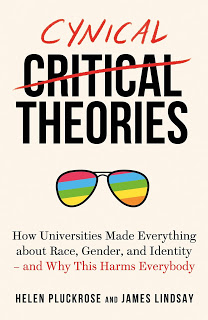
Pluckrose, Helen and Lindsay, James, ‘Cynical Theories – How Universities Made Everything about Race, Gender and Identity – and Why This Harms Everybody
Applied postmodern theory tends to see ‘system’ (via knowledge/language/power) as being the problem more so than willing, dominating agents. And again, from a Modernist perspective Habermas also saw [capitalist] system as ‘colonising’ ‘lifeworld’. The reality is an interplay of system and agency. Capitalism itself has systemic imperatives ; and those imperatives have achieved a global scale. At the same time capitalist Ideology is hegemonic and virtually unchallenged. Even Social Democratic parties have accepted the retreat of the welfare state, not only embracing the consequences of capitalist imperatives; but sometimes even internally embracing aspects of its neo-liberal variant. But amidst all this there are political actors. The bourgeoisie understands its interests and is organised. Those oppressed under capitalism must also collectively perceive their position, and organise for socialism.
There’s nothing wrong with an applied theory which aims to inform historical agents who will change the world. The problem is an arbitrary hierarchy of perceived identity-based oppression – which does not strictly accord to the real world. That is, the categories aren’t sufficient to explain things in their complexity; and some are often arbitrarily prioritised over others. Reality is more complex. And along the way the objective reality of class has been abandoned; or treated like ‘just another identity’. This is important because CLASS is a social relationship and potential identity and source of consciousness which can unite the majority rather than just dividing them against each other. Sensitivity to the problems of various identity groups could be integral to healing the divisions within the working class. But class is the central social relationship of capitalism. Social Justice activism has been so successful that in some cases it has turned oppression on its head. But ‘turning oppression on its head’ is not the same as abolishing it. The way forward is to roll back all oppression and alienation; and work towards the kind of society where all can lead happy, free, meaningful lives – without oppression, alienation, exploitation or prejudice.
Bibliography:
Pluckrose, Helen and Lindsay, James, ‘Cynical Theories – How Universities Made Everything about Race, Gender and Identity – and Why This Harms Everybody, Swift Press, London, 2020.
This article was originally published on ALP Socialist Left Forum.
Like what we do at The AIMN?
You’ll like it even more knowing that your donation will help us to keep up the good fight.
Chuck in a few bucks and see just how far it goes!










